|
www.artron.net, January 1 2020
The “New Boy” Who Did Art in 2000, I Miss You!
Original: Artron Headline 2020/01/01
When the cellphone number "013701059553" became a hotline in 2000, He An became popular too! In 2000, a cellphone number must begin with a “0”, which meant that both the caller and the receiver would be charged with the long-distance call fee. Even so, there were still more than 200 calls coming in every day, for courtship or for comfort, because of boring or because of curiosity.
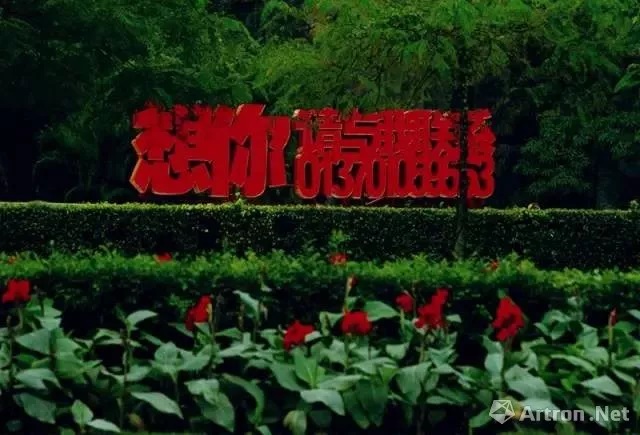
He An, "I Miss You, Please Contact Me at 013701059553", LED light box, 2000, Shenzhen
On a street of Shenzhen in 2000, this was a contemporary artwork made by the “hooligan” He An. The huge 12-meter-long light box told people that "I miss you, please contact me at 013701059553". God knows how He An came up with it !!
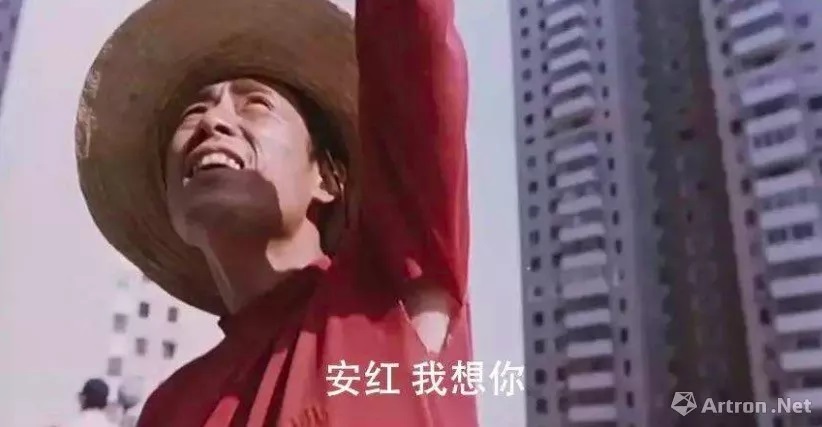
The quotation in Zhang Yimou's movie "Keep Cool": "An Hong, I miss you".
The effect can be compared with the plot in the movie “Keep Cool” filmed some years before. Zhao Xiaoshuai hired someone to woo An Hong loudly: “An Hong, I miss you. I miss you so much that I want to sleep… no, I miss you so much that I cannot sleep!”
In short, I just miss you! I miss you! I miss you!
Artists Who Lived Like Wild Dogs
20 years later, it is 2020 now, and it is said that we no longer have the same dizzying, blazing enthusiasm. Instead, we have been beaten by life.
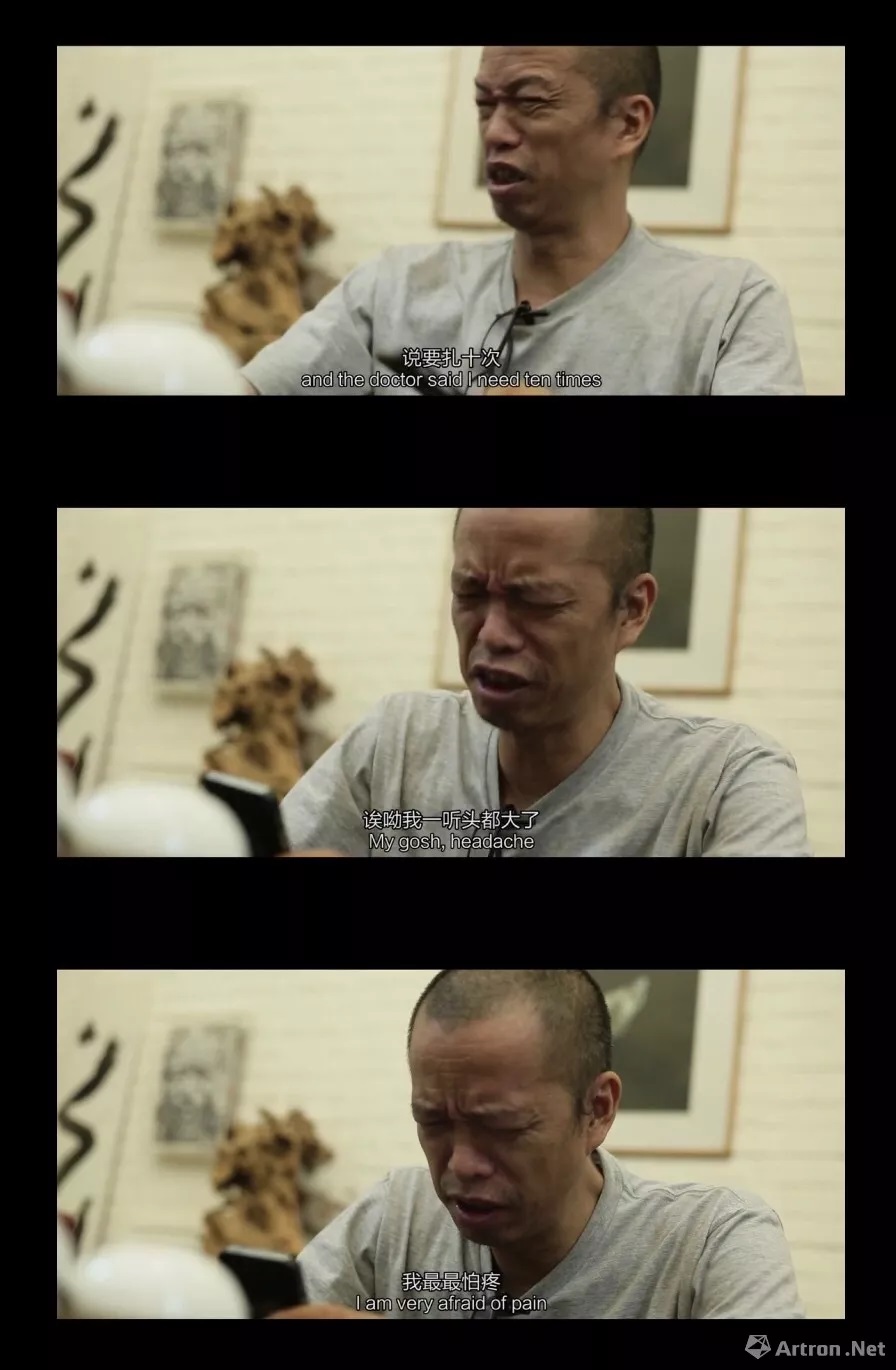
He Yunchang, who has more than 2,000 wounds on his body, says he was very afraid of pain.
The "New Boys" in 2000 have been white-haired. Even the “most painless” He Yunchang, who has more than 2,000 wounds on his body and lost a rib, says with a twisted face that he was very afraid of pain when he need to have an injection to treat the severe varicose veins in his hand, a result of playing video games for ten years.
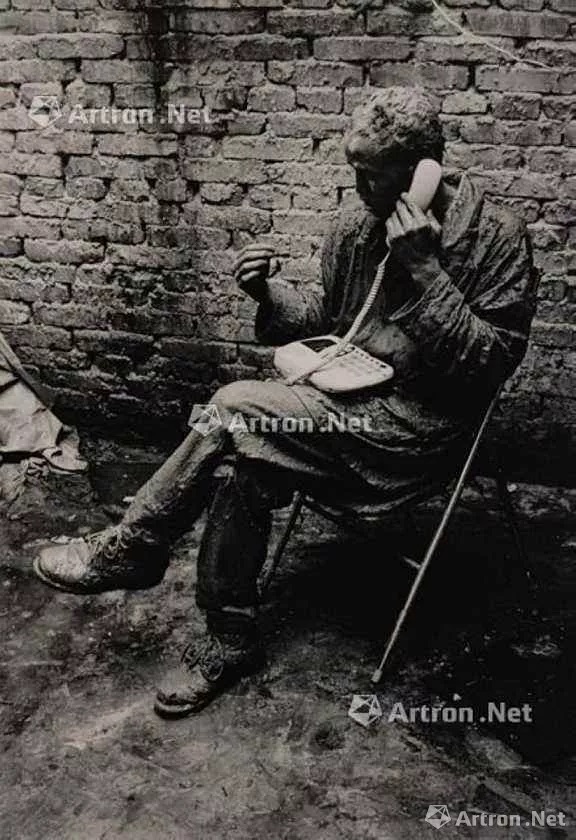
He Yunchang’s first public performance art piece, "Appointment with Tomorrow", 1999
He Yunchang was in his creative peak around 2000. In 1999, He came to Beijing. "Appointment with Tomorrow" was his first public work. He made a random call by using a telephone with a cut wire, and the fictional conversation lasted for 75 minutes. And then was the “Talking with Water" and so on. He Yunchang recalls that he had to paint realistic paintings or sculptures to make money for his performance art.
At that time, the scarier thing than having no money was that you were not crazy enough!
There is a question-and-answer on Zhihu (a Chinese question-and-answer website) about whether there is any contemporary artist who is crazier than Cai Guoqiang. Zhang Huan is ranked first.
A few years before 2000, Zhang Huan created his "12 Square Meters" at Dongcun village, Beijing. He covered himself in a mixture of fish oil and honey from head to toe, and then attracted flies and bugs to climb on him. Dongcun villagers called the police, and Zhang Huan ran away.
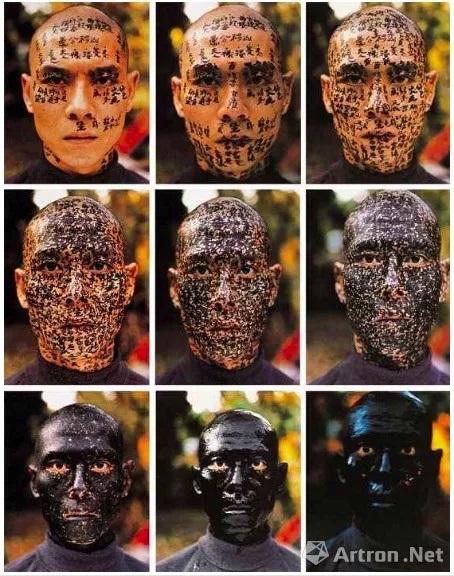
Zhang Huan’s “Family Tree” (2000) is considered by Zhihu users as more crazy
In 2000, Zhang Huan seemed to find a more "harmonious" language. Created in the United States, his "Family Tree" include nine close-up photos of his self-portraits. In these photos his face was covered step by step by idioms and legends written in black ink, until it was completely blackened in the last picture.
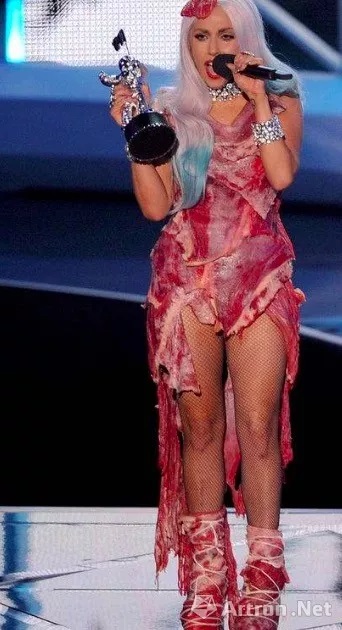
The meat dress Lady Gaga wore in 2010
After that, Zhang Huan’s avant-garde went even further. In 2010, Lady Gaga surprised the audience with a meat dress at a ceremony in Los Angeles.
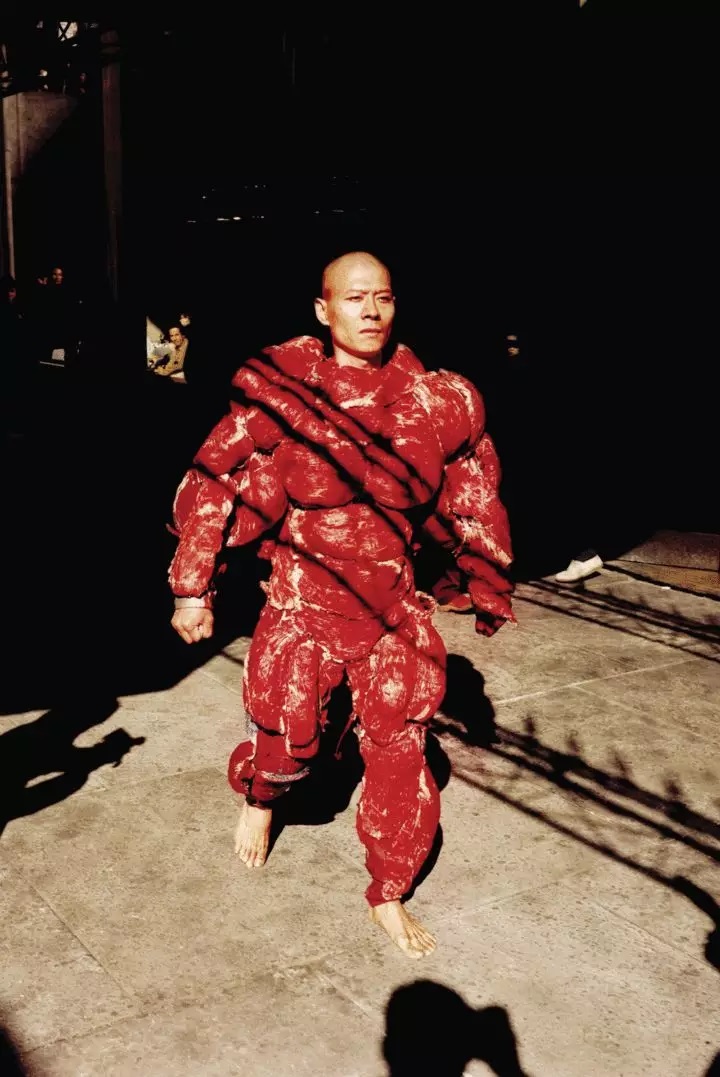
Zhang Huan’s performance art at the Whitney Biennial in 2002
As early as in 2002, Zhang Huan had created a performance art piece at the Whitney Biennial, in which he dressed in a meat suit walking around the streets of New York City.
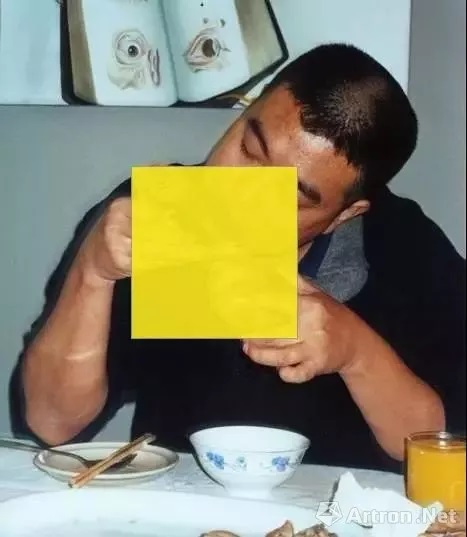
Zhu Yu's performance art “Cannibal” caused mighty uproar in 2000
The extremely crazy one was Zhu Yu. In 2000, Zhu Yu obtained a corpse of a female infant (6 months old) from a hospital in Beijing by cheating, and then he performed a performance art through cooking that might be unprecedented but might not be the only one. Zhu Yu came under a storm of criticism from all walks of life.
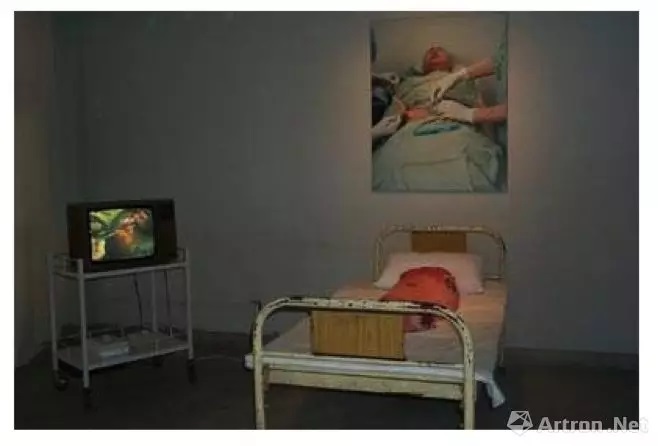
Zhu Yu reproduced a surgery scene in an exhibition, 2000
On March 24, 2000, Zhu Yu took a piece of prismatic skin with a length of 12CM and a width of 4.5CM from his lower abdomen through a surgery in a hospital. One month later, in the exhibition "The Obsession with Injury", he used surgical tools to stitch the skin to a piece of pork he just bought.
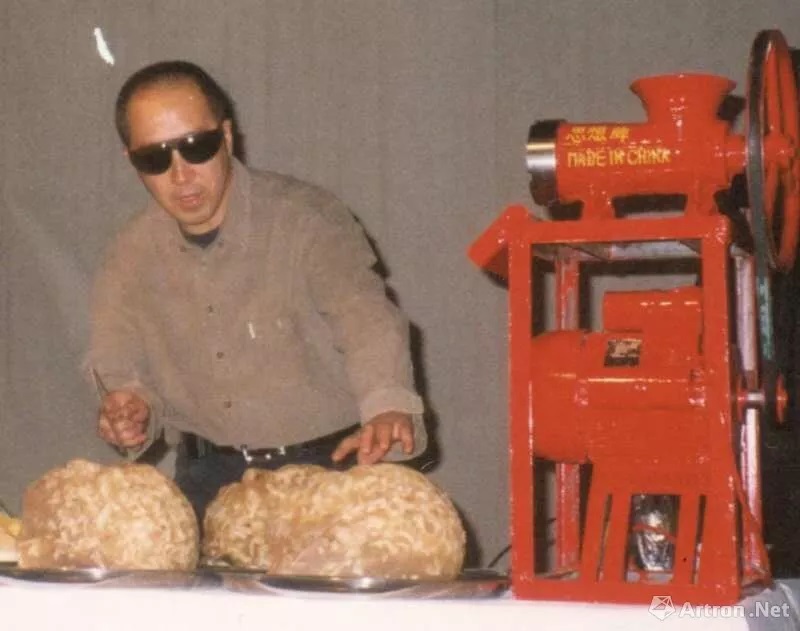
Zhang Dali in 2000
Zhang Dali says that "Chinese contemporary art" was still non-mainstream in China at that time, but it had been highly valued by overseas artistic circles and accepted by the international market. Performance art was a means by which many artists express their intense thoughts, and photos had also become the main works in various international exhibitions. From January 15th to February 19th, 2000, Zhang Dali’s works were shown in the "Serendipity · Asian Video Art Exhibition", an exhibition organized by the Japan International Exchange Foundation. On February 17th of the new year, Mr. Wu Hung curated an underground art show “Food as Art” in Club Vogue at Sanlitun, Beijing, featuring Gu Dexin, Zhang Nian, Luo Zidan, Zhang Dali, Huang Yan, Sun Yuan, Peng Yu, and Wang Chunhong. On April 3rd, Zhang Dali performed a performance show "Thought Brand Meat Grinder" in Dongshuang Batiao in Beijing. On October 28th, he participated in the "Uncooperative Way", a group exhibition in Shanghai. And on November 7th, he performed “Dialogue and AK-47” at Shanghai Bund No. 3 Gallery.
Zhang Dali says that it was an era full of vitality and blood, and everything was to be full of hope.
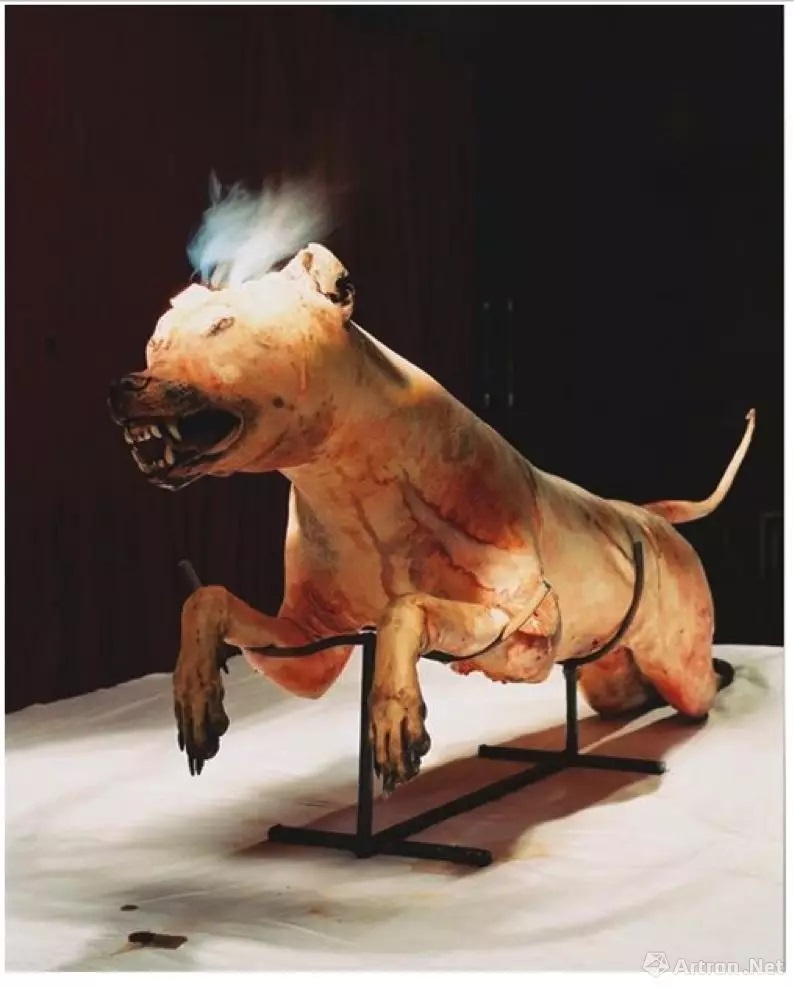
Sun Yuan & Peng Yu, “Soul Killing”, 2000
In the same "The Obsession with Injury" exhibition on February 17, 2000, Sun Yuan and Peng Yu showed their performance work "Siamese Twins". And in the "Food as Art" exhibition curated by Wu Hung, they showed their installation "Soul Killing", which illuminated a frozen hound with a spotlight through a large magnifying glass.
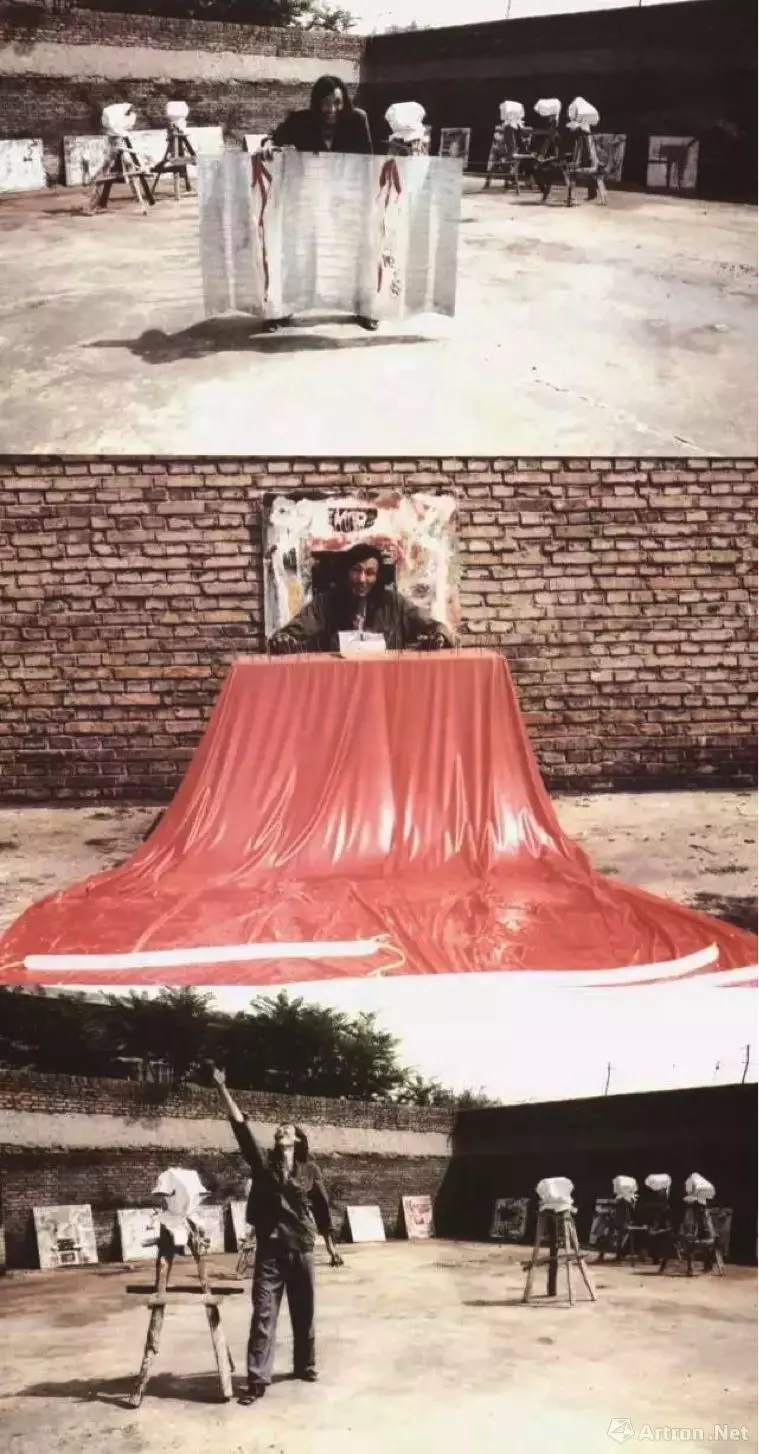
In a coal yard in Datong: Nobody Known Art Exhibition
What's even violent was Datong DaZhang, formerly known as Zhang Shengquan.
On January 1st, 2000, Datong DaZhang implemented "The Last Performance Art of His Life" and died in his own apartment in Datong. He gave up his life as the last artistic act of his life.
In order to prevent the "violence" of performance art from intensifying, the government issued the "Notice on Resolutely Stopping Performing or Displaying Bloody Cruel Obscene Scenes in the Name of ‘Art’" in 2001.
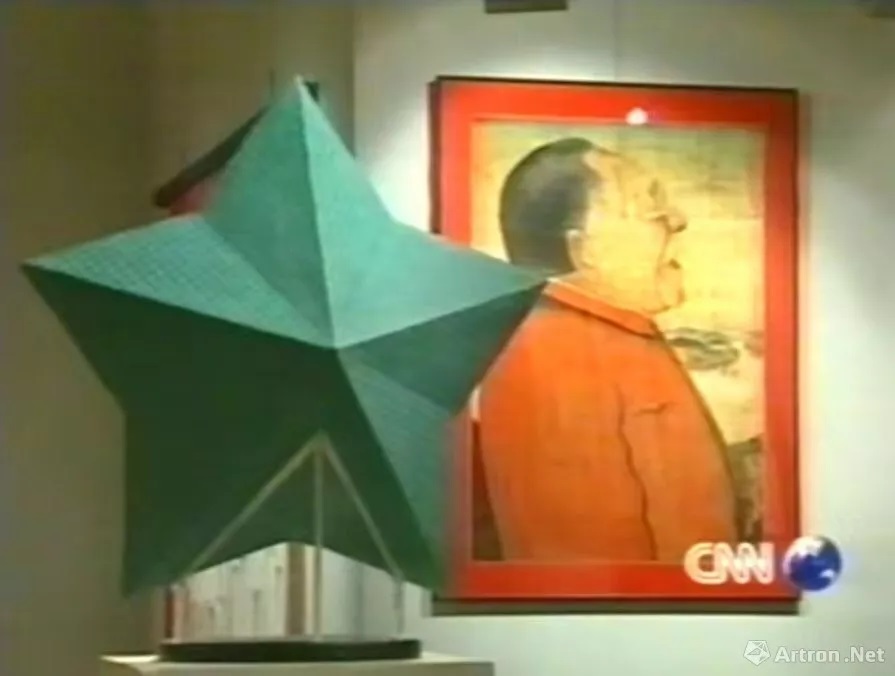
Zhu Wei’s artworks on CNN
Zhu Wei, who knows how to paint, also mentions about the high spirits around the Millennium, when people were full of energy, and new ideas came out almost every day. He says the wave of globalization just started at that time, and everyone was humble in front of it. In 2000, Zhu Wei had several solo exhibitions and group exhibitions in Beverly Hills, Los Angeles, Singapore, and Hong Kong. When he received the special interviews on CNN and NBC, he talked about the Chinese contemporary art, which was attractive to audiences at the time. At the same time, he was preparing for a large-scale retrospective exhibition in New York in 2001.
The lucky ones in 2000 had already bidden farewell to the "11 Route" (travelling by feet) and buses.
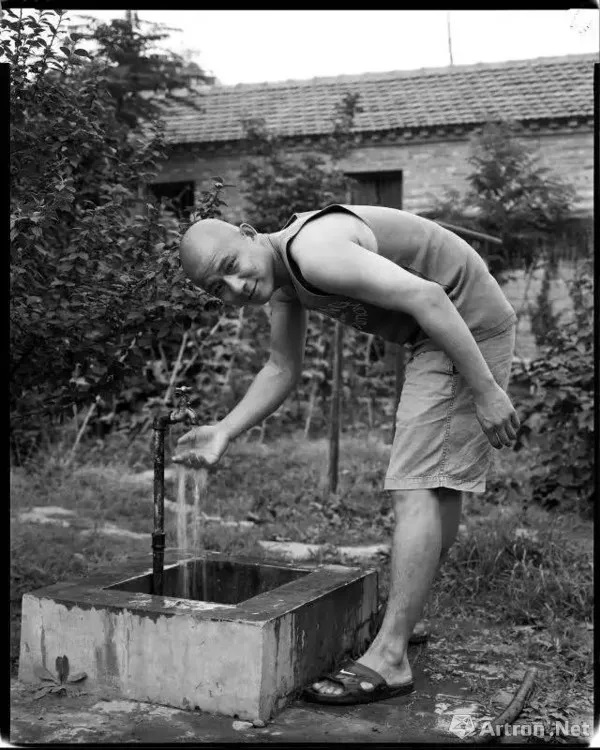
Fang Lijun at Songzhuang, Beijing, photographed by Shi Hongwei
In the summer of 2000, Fang Lijun, known as the "lucky man", was taken a picture at Songzhuang, Beijing. The sun was shining, and he was already out of poverty. His famous "Yawner" appeared in the United States in 1993 on the cover of Time magazine. It was also the same year that Fang Lijun became the first Chinese contemporary artist being invited to the Venice Biennale.
The real estate price in Beijing was not as crazy as it is today. These "aimlessly drifting artists" in Beijing, including Fang Lijun, Liu Wei, etc., managed to club their dollars and buy a small farmhouse in Songzhuang for curator Li Xianting, to appreciate the latter’s support.
Although they were not as successful as the "85" artists such as Wang Guangyi and Mao Xuhui, who were already well-known at the time, the emerging "new generation" such as Fang Lijun, Liu Wei and Yue Minjun no more relied on "11 Route" or buses to go out. They drove cars or took a taxi.
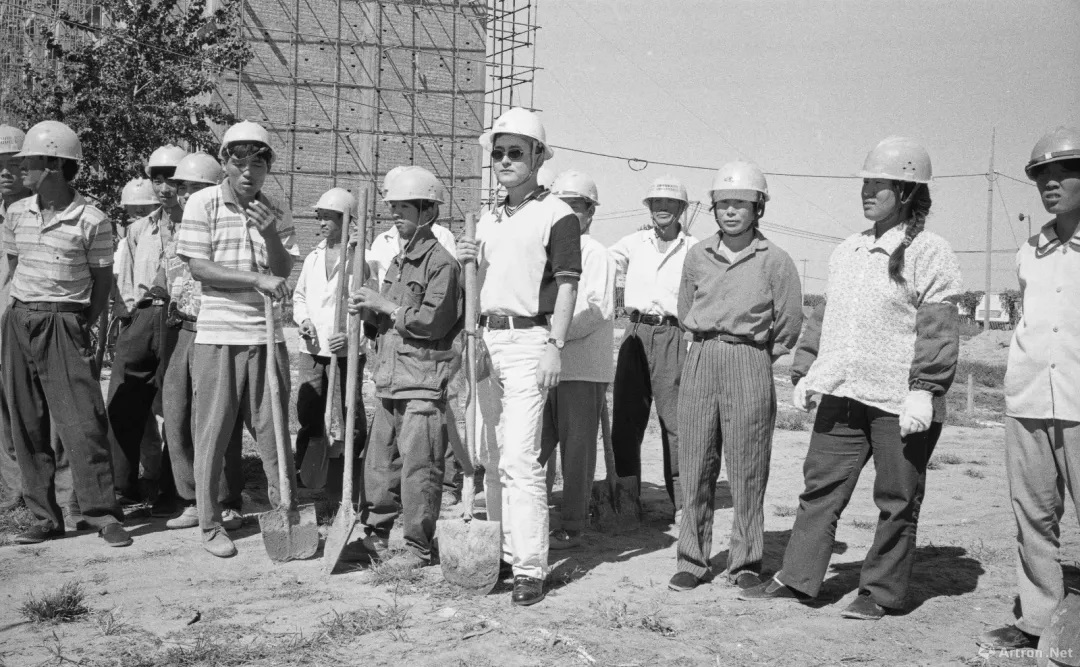
Zeng Fanzhi in 2000, photographed by Zhang Jing, courtesy of Zeng Fanzhi Studio
Zeng Fanzhi says that 20 years can be counted as a cycle, and now it seems that everything is about to start again.
In 2000, Zeng Fanzhi set up his first studio in Yanjiao, Beijing. Now he has moved to the studio in Caochangdi, and has begun to build another new studio again.
"In the past, the size of my works could not be too large due to the limitation of space. And then in this studio, I began to paint large works with ease, which was a leap for my creation. I planted two sycamore trees in the studio when I moved in, and now they have grown into towering trees. "
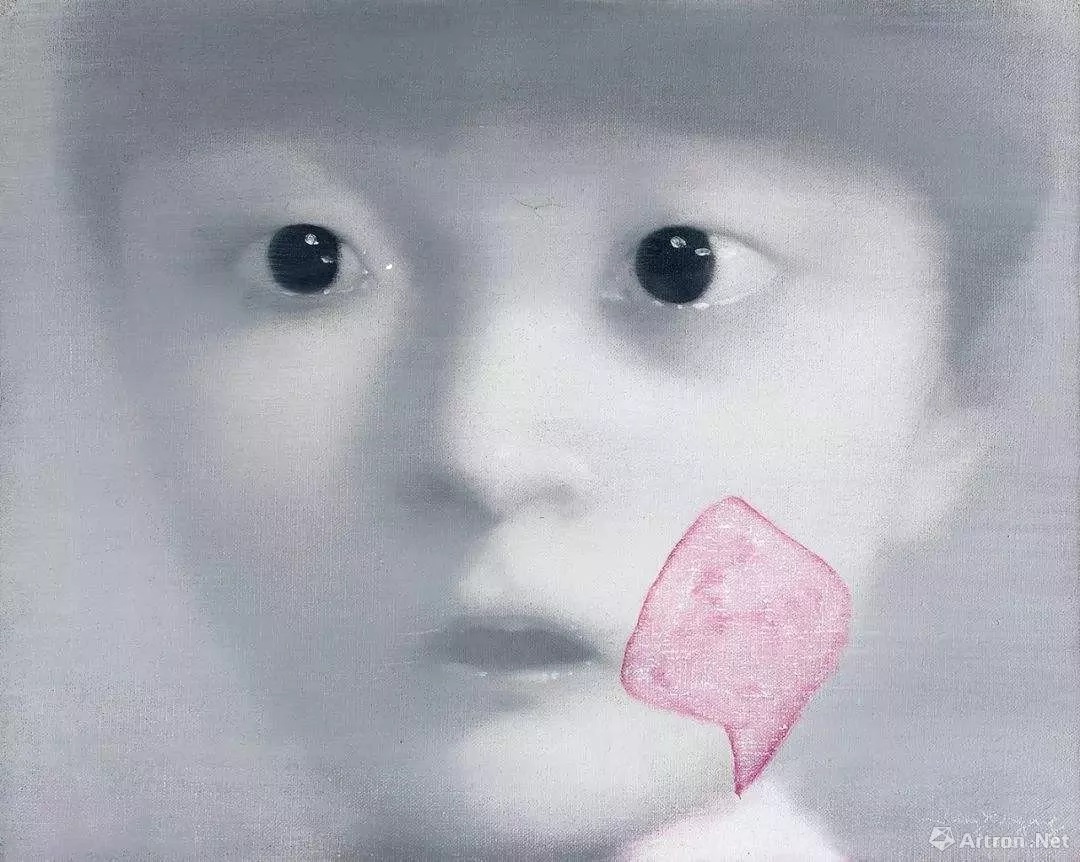
Zhang Xiaogang, My Daughter No.1, 2000, oil on canvas, 40 x 50 cm
Zhang Xiaogang was very distressed. One day in 2000, Zhang Xiaogang suddenly no longer wanted to paint those in-process “Big Family” series, and started to draw a portrait of his daughter, because he missed her very much. In 1999, Zhang Xiaogang and Tang Lei divorced. When he first arrived in Beijing and was busy in buying a house, he received a breakup letter from Tang Lei.
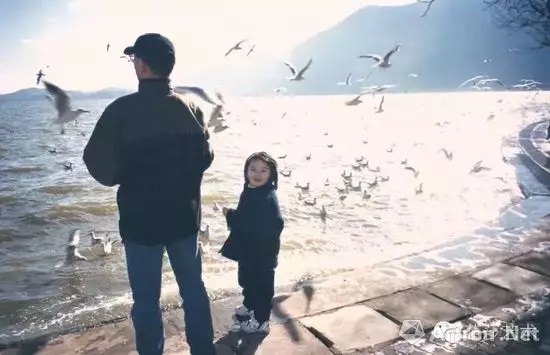
Photo of Zhang Xiaogang and his daughter when they were in Kunming, 2000
In Zhang Xiaogang’s memory, he was a bachelor in his 40s, who moved to another city, lived in a rented house, moved several times in the past 8 years, and had not yet found a sense of taking root in Beijing. He says he was a wild dog.
Ten years after that, Fang lijun's autobiography was titled "Surviving Like a Wild Dog". It was the same for people who led a wandering life outside.
The outsiders’ rushing into Beijing and living a life of "wild-dog-style" was also underway in Shanghai in a different way. Yang Fudong, who was from Tongzhou, Beijing, chose to settle in Shanghai after graduating from the China Academy of Art, and organized a series of well-known exhibitions with Yang Zhenzhong and Xu Zhen during 1999-2000.
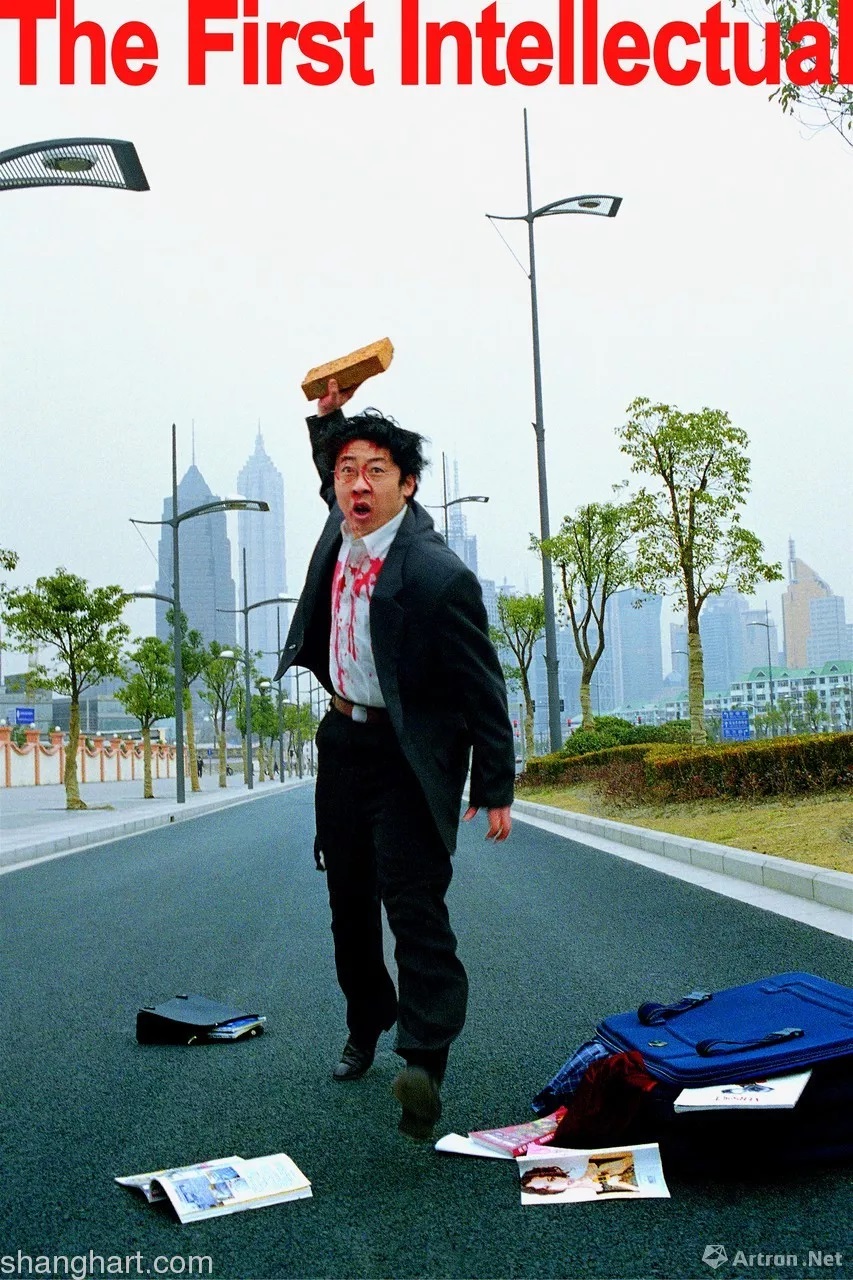
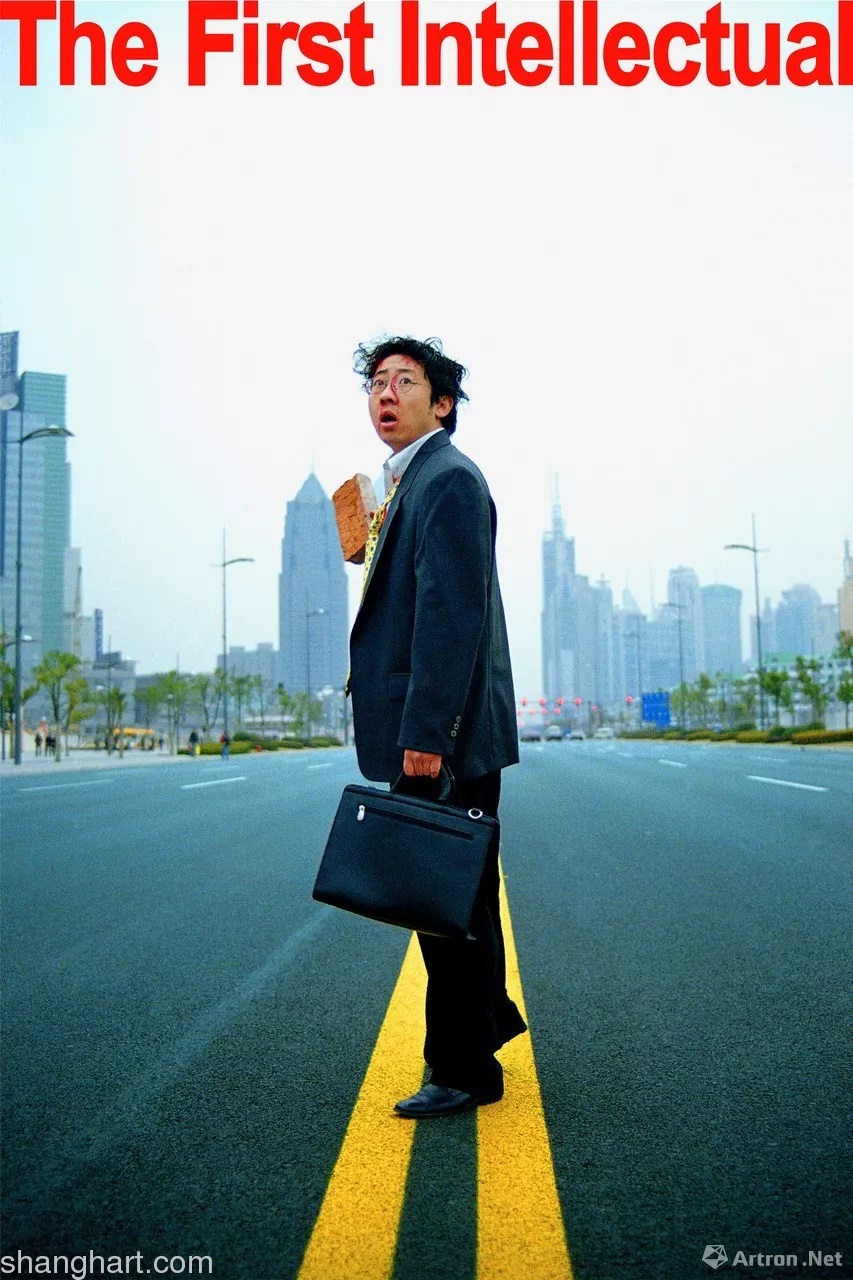
Yang Fudong, “The First Intellectual”, 2000
Yang Fudong says that in 2000, everyone wanted to do something huge, but in the end they always failed. The man in suit was holding a brick without knowing whom to hit, confused and powerless, face covered with blood.
Young people and artists who were born in the 1980s had a firm belief in changing the world, but reality is another story.
In 2000, Jia Aili could never have imagined that he would become a leader among artists of his age.
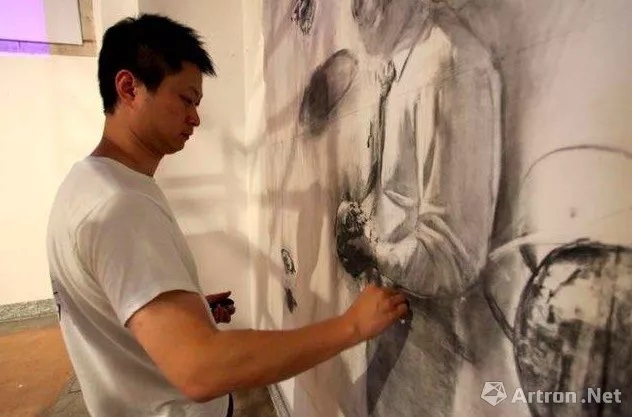
Jia Aili and his works
Dandong, a small northeast city near the border between China and North Korea, is the starting point for Jia Aili. In 2000, Jia Aili was an art student carrying a drawing board. After the art test and the college entrance examination, he entered the oil painting department of the Lu Xun Academy of Fine Arts, and started his fortunate life.
This kind of confusion in 2000 was probably not so obvious in Xu Bing's generation. In 1990, he was invited to the United States as an honorary artist. The brilliance of "genius" had made this Chinese artist famous worldwide.
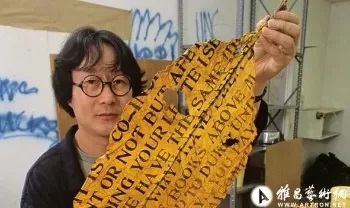
Xu Bing’s printed tobacco leaf, 2000
In the beginning of 2000, shortly after Xu Bing won the "MacArthur Genius Grant" in the previous year, Duke University invited him to participate in an art event. The university is located in Durham, where was known as the City of Tobacco, and the smell of tobacco was everywhere there. Today Durham is not only famous for its cigarette factory, but also for its cancer research center. This gave birth to Xu Bing’s later famous Tobacco Plan, which continues until today.
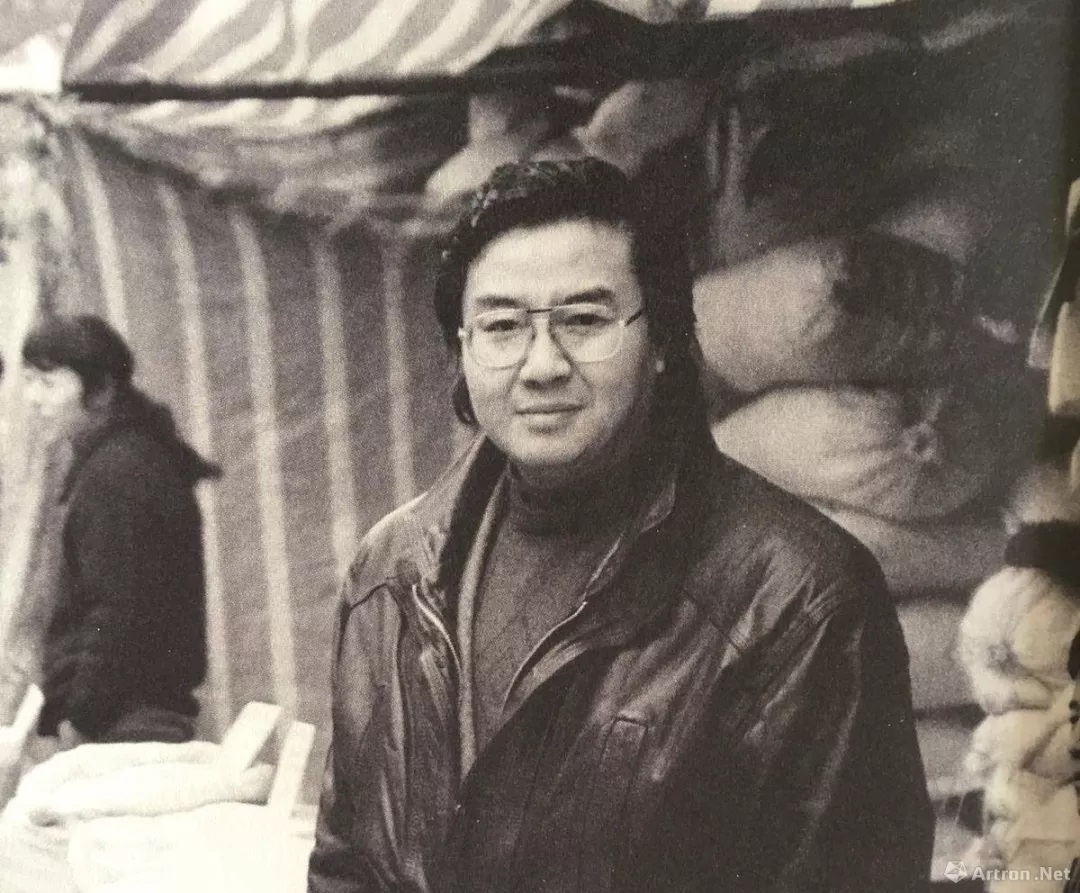
Chen Zhen (1955-2000)
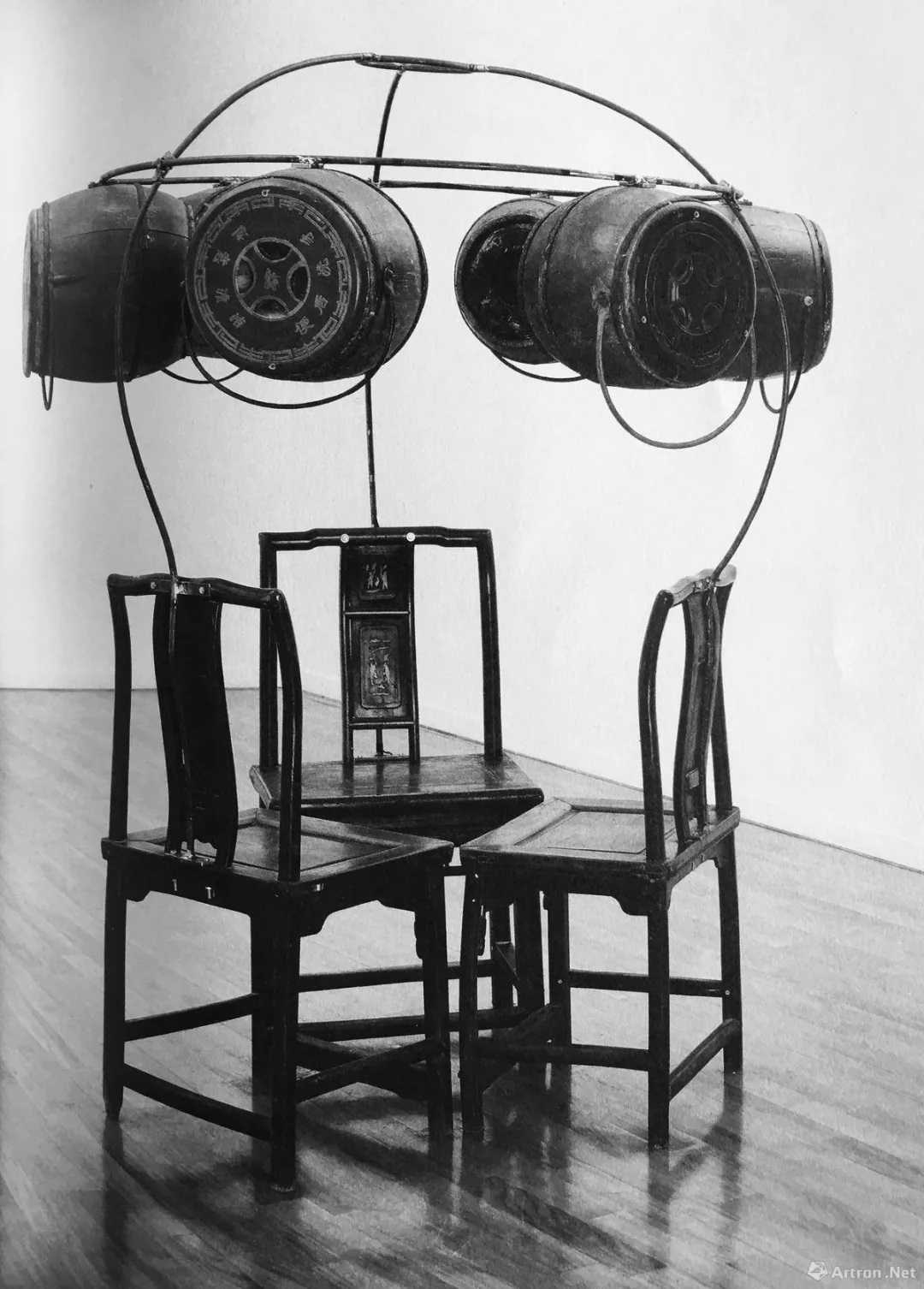
Chen Zhen, “Static Energy”, 2000, Turin, Italy, 160 x 140 cm, photographed by Maurizio Elia
Chen Zhen‘s life and creation ended abruptly in 2000. Asserted by doctors that he might only survive for five or six years, Chen Zhen went to Paris, France, in 1986, to embrace his love of art, and to be the being towards death. For his family it was a big decision with love, letting their son go to the Louvre to see the true art.
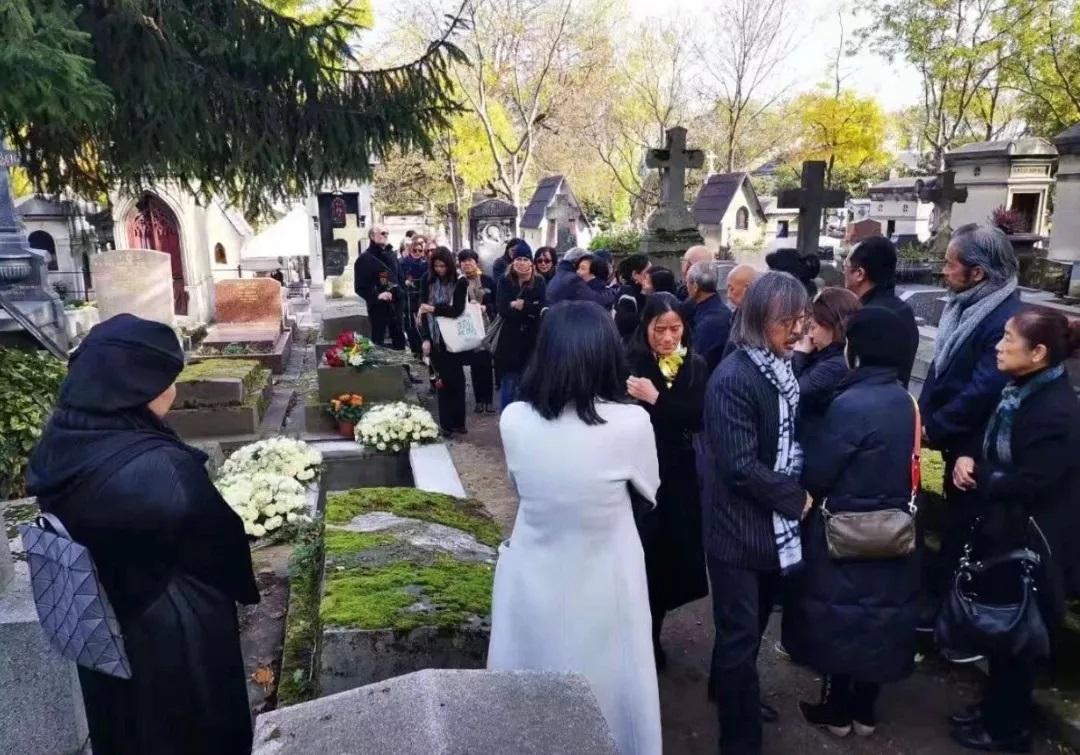
On October 28, 2019, Huang Yong Ping slept forever at the Père Lachaise cemetery
Chen Zhen passed away on December 13, 2000, and was buried at the Père Lachaise cemetery. 19 years later, Huang Yong Ping, Chen’s close friend, died of illness in Paris. On October 28, 2019, Huang Yong Ping was buried at the Père Lachaise cemetery, and was accompanied by Chen Zhen
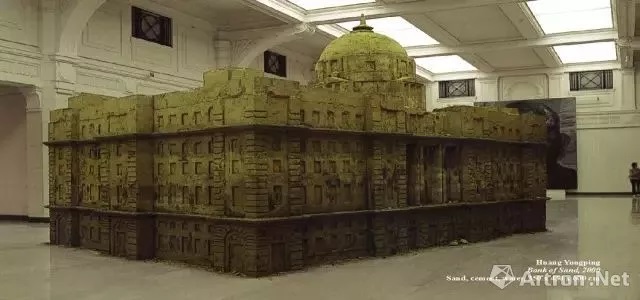 . .
Huang Yong Ping, “Bank of Sand, Sand of Bank”, Shanghai Biennale, 2000
November 16, 2000: An Important Symbol of Chinese Modern Art
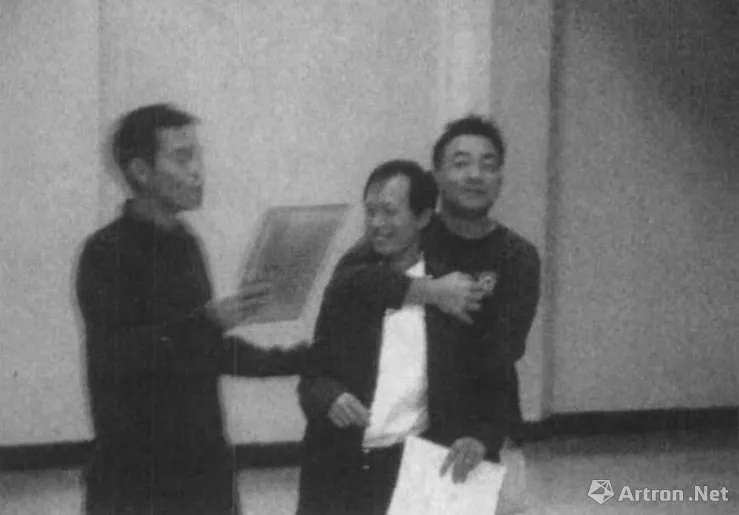
An artwork that was not considered as a work of art: "Arresting Hou Hanru", 2000
November 6, 2000 is also considered an important symbol in the history of Chinese art. Curator Zhu Qingsheng said, "The Shanghai Biennale is the first public and legal modern art exhibition in China." One of the curators of that year's Shanghai Biennale was Hou Hanru. In the biennale two artists playfully claimed that what Hou Hanru did was harmful to art, and pretended to arrest Hou Hanru.
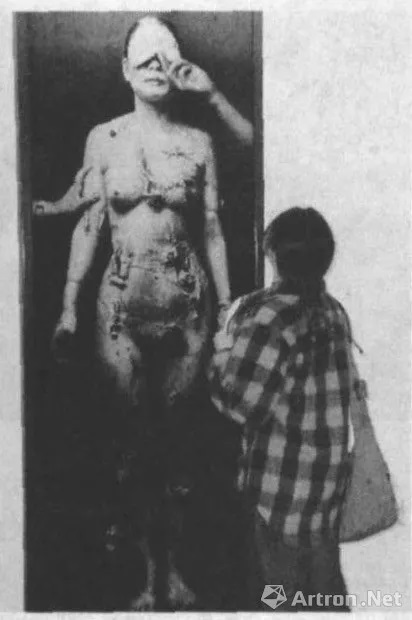
A girl in front of Shi Chong’s “Stage”, 2000
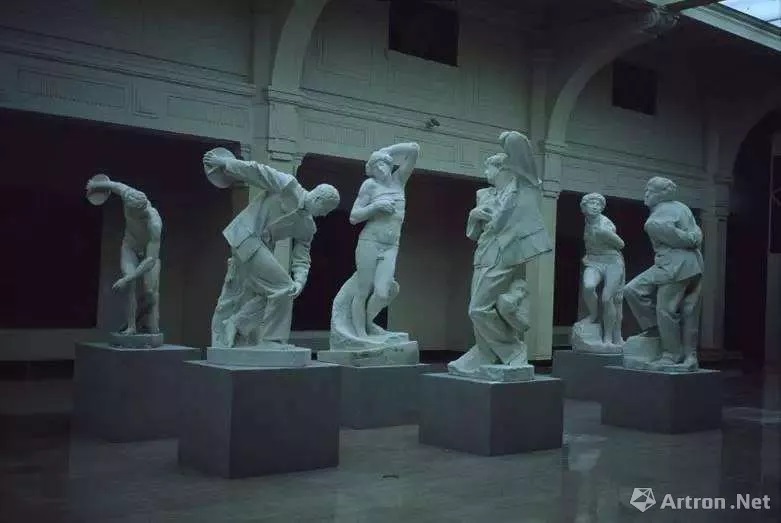
Sui Jianguo, “Clothes Veins Study”, 2000
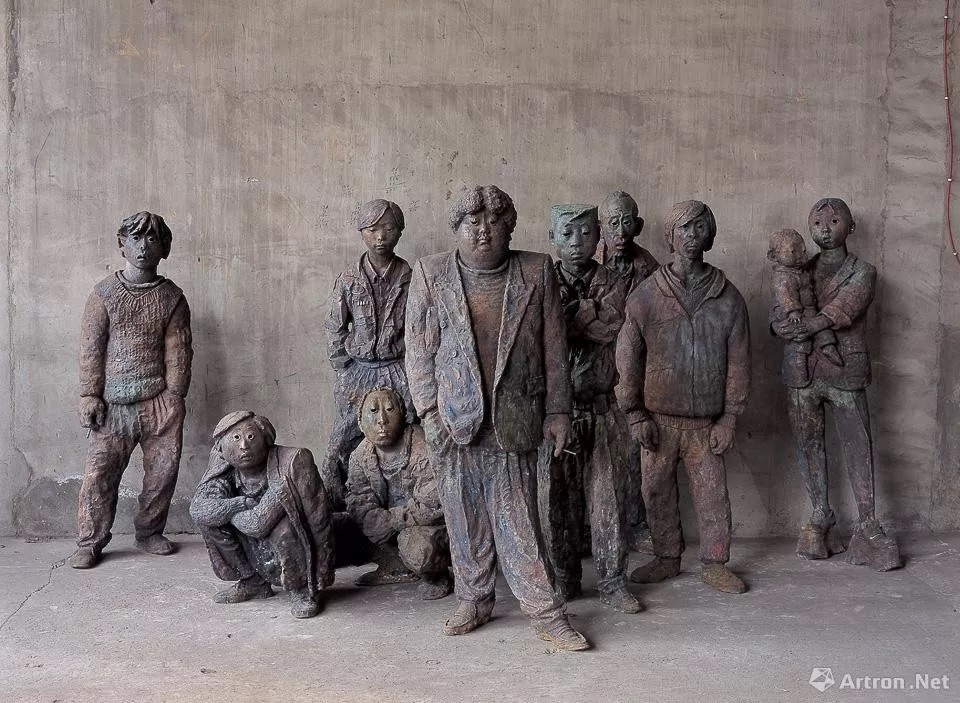
Liang Shuo, “Urban Peasants”, 2000
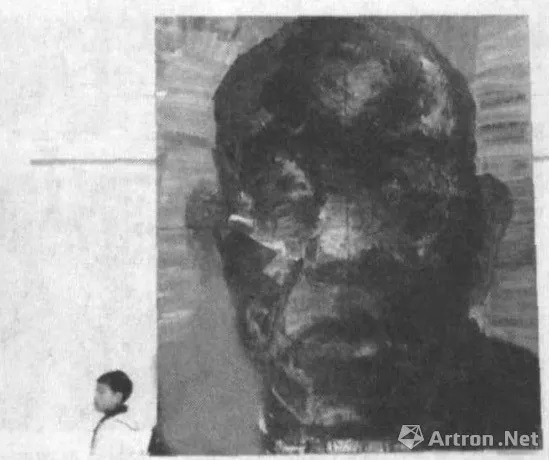
Yan Peiming, “Invisible Man 002”, 2000
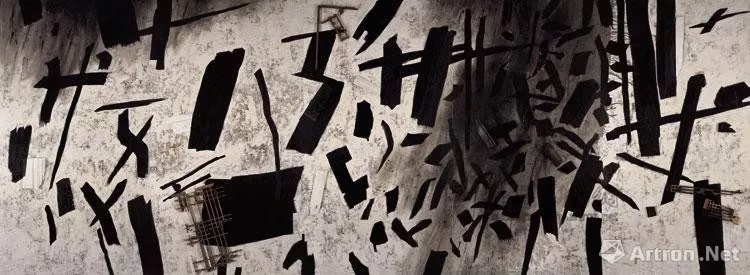
Wang Huaiqing, “One to Ten Thousand - 3”, 2000
At the Shanghai Biennale, the regular award-winner Shi Chong's work "Stage" fascinated a girl who came to watch the exhibition. Sui Jianguo's conceptual art sculpture "Clothes Veins Study", Liang Shuo's "Urban Peasants", Yan Peiming's "Invisible Man 002", and Wang Huaiqing's "One to Ten Thousand - 3" were exhibited on the same stage. Matthew Barney and Anselm Kiefer, who became famous in China later in 2019, also participated in the biennale.
However, for other exhibitions, environment was never as good. In 2000, contemporary art exhibitions were still in a semi-underground state. Exhibitions were often suddenly closed with a temporary notice, and the reason was being uncensored.
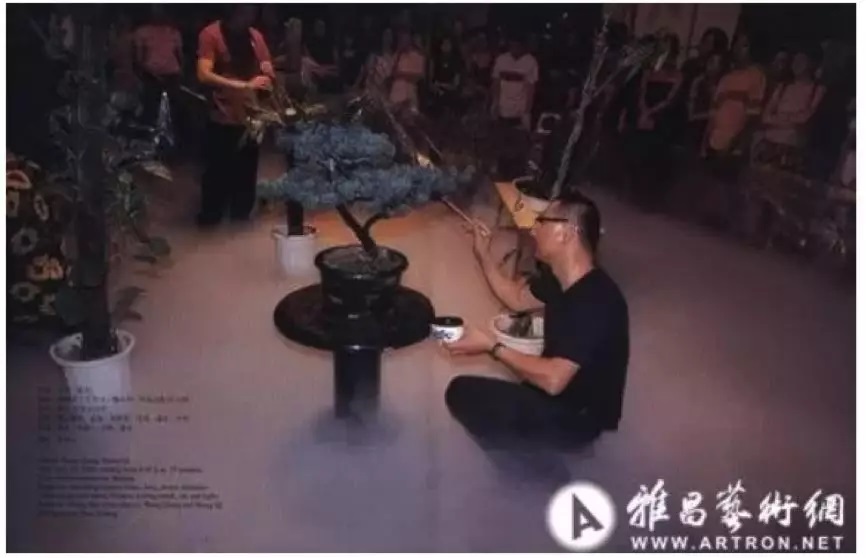
Wang Qiang and Sheng Qi’s exhibition in 2000
One day in the summer of 2000, Wang Qiang and Sheng Qi, two contemporary artists, were going to perform in an exhibition of performances and installations. It was already afternoon when everyone received the opening invitation, and it was dark when people arrived in an old-factory-like workshop. Sheng Qi and Wang Qiang were ready to start. When audiences circled them, they began to write on the bonsai plant with ink brushes. Later, people knew that the name of the exhibition was "New Chinese Painting".
Although there was no biennial in Beijing that year, there were galleries.
In the early days, the customers of Chinese paintings were mainly foreigners, and the earliest galleries were run by foreigners as well. American Meg Maggio opened Courtyard Gallery in Beijing, so did Australian Brian Wallace with his Red Gate Gallery. In Shanghai, the ShanghART Gallery was among the first ones that entered China.
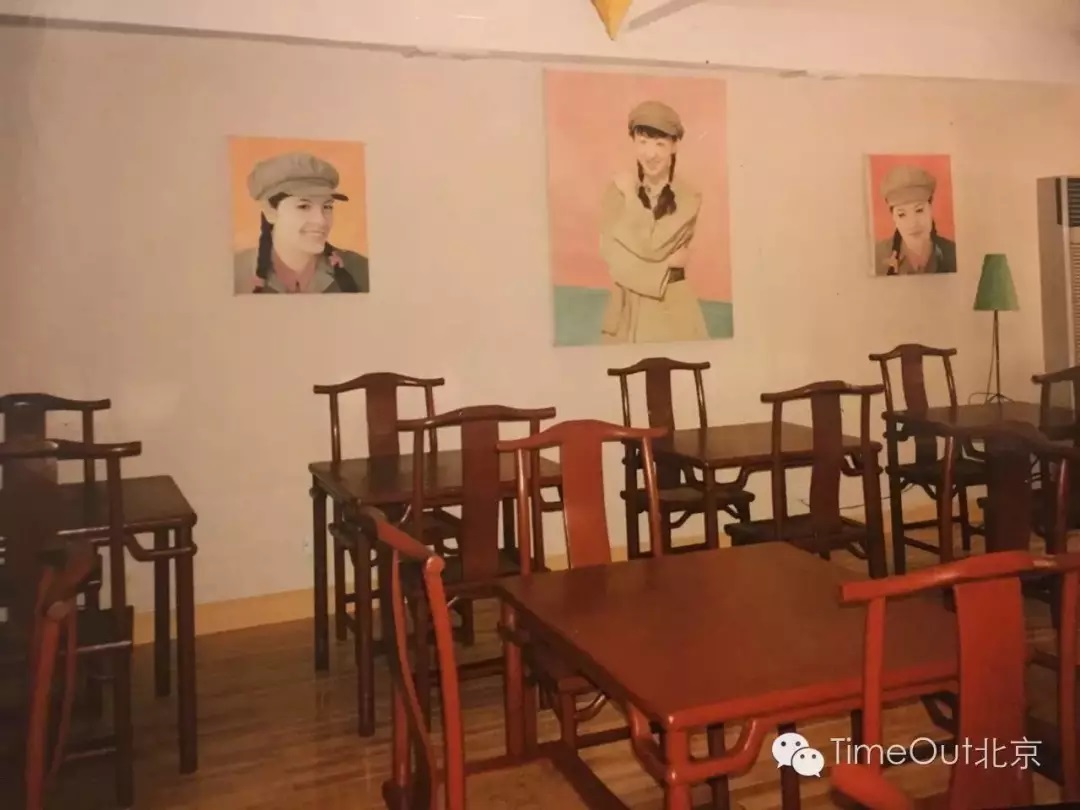
Contemporary art works hung in Beijing's Sanlitun restaurant in 2000
One of the earliest Chinese local galleries was Hanmo Art Gallery, run by a Beijinger and “old hooligan” Lin Song. Meanwhile, Xiao Fuyuan, the founder of Soka Gallery, was preparing to open the first Taiwan-funded modern gallery in Beijing.
Xiao Fuyuan had visited the Courtyard Gallery and Red Gate Gallery, and learned that 99% of their artworks were sold to foreigners, while only one very cheap work was sold to a Chinese who returned from abroad. He concluded that an art market had not yet formed in China, but he was optimistic about the future market. So he finally chose to open the Beijing Soka Art Center in Xiushui East Street, where the foreign embassies located in Beijing.
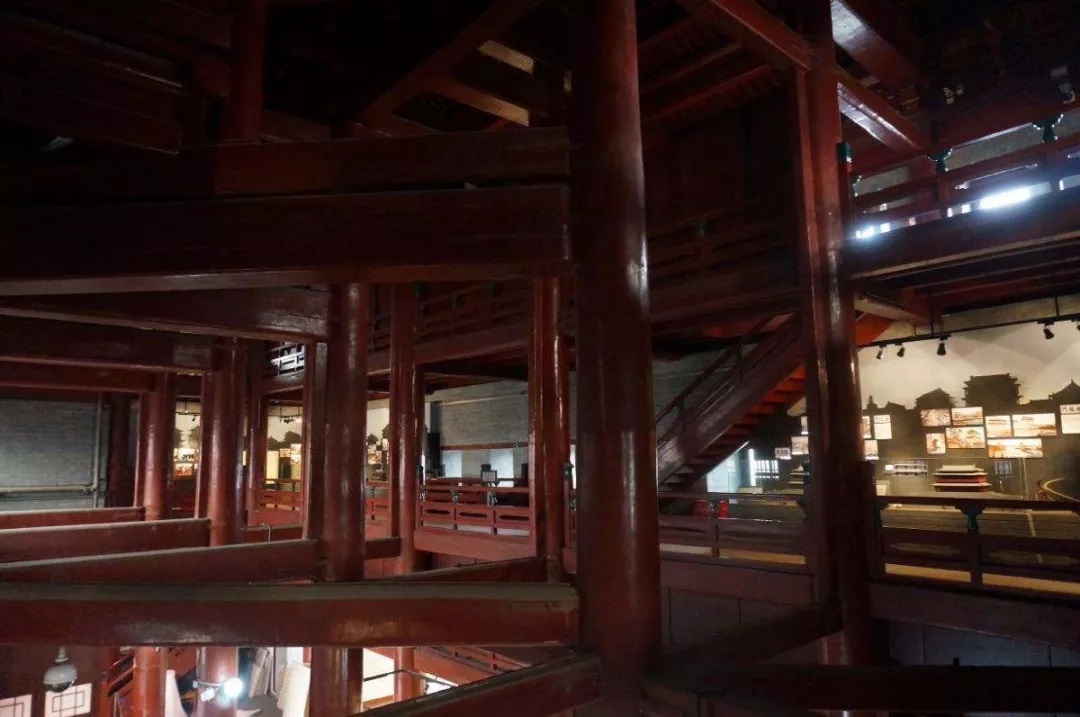
Red Gate Gallery
Before 2000, there were only two galleries in Shanghai, ShanghART and Hwas.
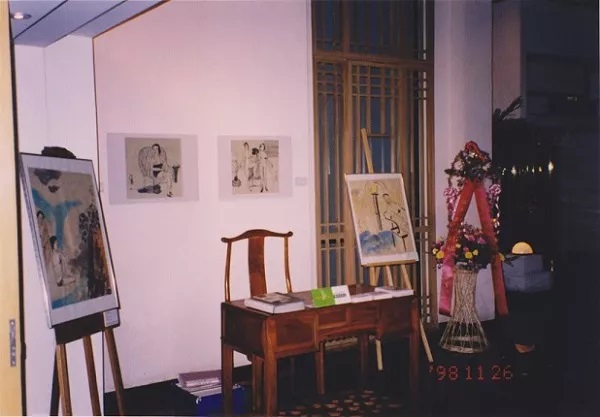
A group exhibition in the newly founded Portsman Hotel in Shanghai, courtesy by ShanghART Gallery
The Swiss Lorenz Helbling often rode a used bicycle in the alleys, with a pager in his pocket. Every time he saw an artist, he would ask, "Do you know any other artists?" In 1996, Helbling opened the ShanghART Gallery in the corridor on the second floor of the Portman Hotel, a first five-star hotel in Shanghai. ShanghART Gallery became the first gallery in China to go to Art Basel in 2000. Since then, Chinese artists began to kick off through the overseas art fairs.
meanwhile, there was another scene in another art vanity fair. In 2000, the volume of Chinese antique and art market had already broken through the mark of 10 million yuan, and the China Association of Auctioneers was established. But it was also in the same year that Qin Gong, a predecessor in the Chinese art auction industry, passed away.
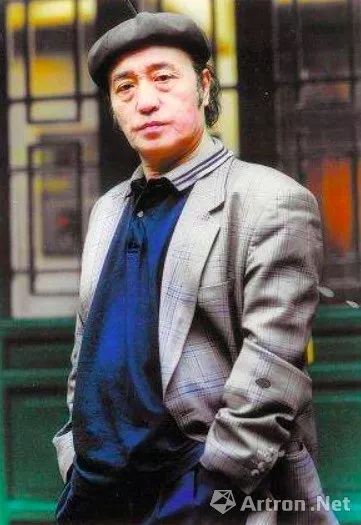
The leader of the Chinese art auction industry Qin Gong passed way in 2000.
On the morning of May 10th, 2000, the camera crew of "Children of the Orient" (a documentary program in China Central Television) came to Liulichang East Street, where Beijing Cultural Relics Company was located. Prior to this, a representative of Beijing Hanhai Auction just bought a national treasure, a treasure plundered from the Old Summer Palace by the British-French Alliance in the Second Opium War, back from an auction in Hong Kong, at a high price of 19.80 million yuan. The returning of the national treasure became a domestic headline at that moment, and the camera crew was to film the background story on location. However, the camera recorded a scene faithfully: the Beijing Emergency Medical Center was carrying Qin Gong into an ambulance, who just had a heart attack due to overwork.
As the ambulance went away, the man who made the history of the Chinese art auction industry went away.
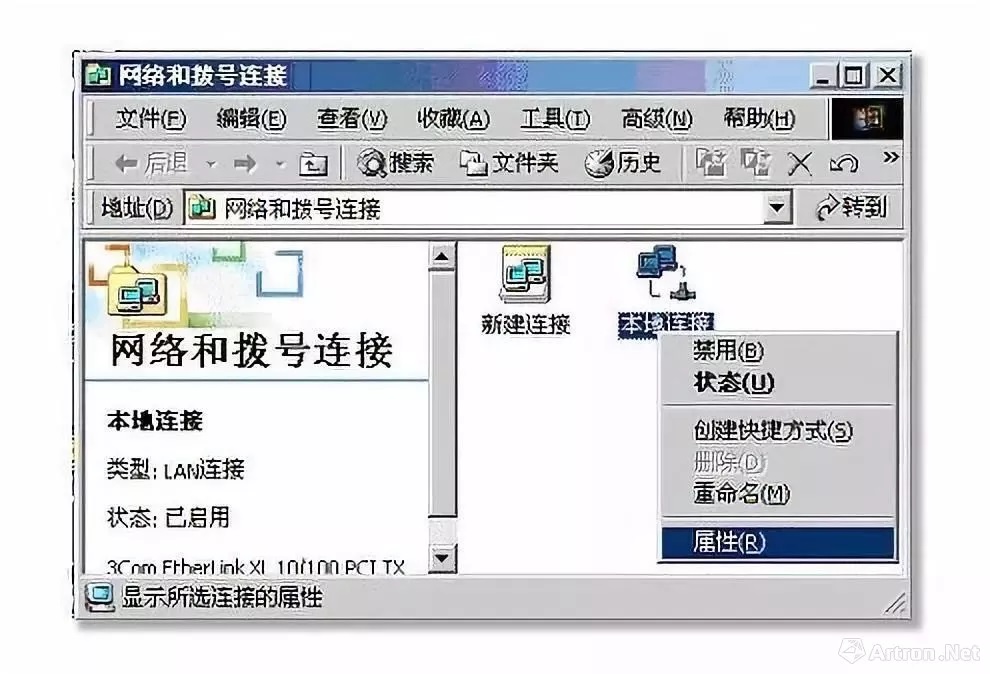
In 2000, when dial-up connection was the only way to access internet, "Art League Channel" set a web page production standard that blank pages could not exceed 56k.
Not only the official media such as China Central Television paid attention to the art industry. In 2000, the Jiangsu Pictorial magazine had been focusing on the "Ink Art: A 21st Century Discussion" for three years.
The most remarkable art news might be the emergence of the earliest art websites: cl2000.com, tom.com, Guardian Online, Artron Art Net... the combination of Chinese art and the internet had taken a groundbreaking step in that year.

Artists did not use computer to make artwork in 2000, otherwise they would be caught by the "Millennium Bug".
When we recall the past, we are not intending to be obsessed with it, but to understand where we came from and how we came from it through the comparison of the past and the reality today. And then we should turn our thinking into action, to move towards the future.
In 2000, there were intense conflicts between the contemporary art events and other aspect of our society. This kind of conflicts is rare today.
But don't forget that an important function of contemporary artists is to tell the truth, that is Michel Foucault's "the courage to tell the truth."
This is fundamental, and we should not forget it.
2000年搞艺术的“New Boy”,想你!
原创: 艺术头条 雅昌艺术网 2020年1月1日
当“013701059553”的电话被彻底打爆时,何岸爆红了!即便2000年时手机号前还有“0”长途冠码,双向收费,每天依然有200多个求爱、求安慰、无聊的、好奇的电话进来。
何岸 《想你, 请跟我联系 013701059553》LED灯箱? 2000年 深圳
这是“混混”何岸在2000年的深圳街头做的一件当代艺术作品,12米长的巨大灯箱上写着“想你,请与我联系013701059553”,天知道当时的何岸怎么想出来的!
张艺谋电影《有好好好说》的金句:“安红,我想你”
这效果不亚于早几年《有话好好说》中赵小帅雇人向安红求爱时的大喊:安红,我想你,想的想睡觉,不是,是想你想的睡不着觉!
总之,就是想你!想你!想你!
像野狗一样生存的艺术家们
有人说,20年后的2020年的我们再也没有这种让人眩晕而炙热的情感,取而代之的是被生活反复捶打过的灰头土脸。
身上2000多道伤口的何云昌说自己最最怕疼了
回头去看2000年的“New Boy”们,早已经白了头,就连曾经“最不怕疼”的何云昌,身上留下2000多道伤口,去了一条肋骨,但因为打了十年游戏的手严重静脉曲张,治疗要扎针,阿昌满脸的拧巴和拒绝:我最最怕疼。
何云昌 第一件公开的行为艺术作品《预约明天》 1999年
2000年左右的阿昌正是创作旺期,1999年何云昌来到北京,《预约明天》是阿昌第一件公开的作品,用一条己切开电线的电话拨打随意编造的电话75分钟,之后是《与水对话》等等,那个时候的阿昌说,自己通常要给别人画点很写实的画或者做雕塑,然后攒点钱就去做作品。
那个时候,比没钱更可怕的是你不够疯狂!
知乎上有一条问答是有没有比蔡国强更疯的当代艺术家,张洹排在第一位。
相较于张洹早几年在东村所作的《12平米》,裸体往自己身上涂上蜂蜜和鱼腥液, 然后招来苍蝇和虫子往他身上爬, 被东村村民举报,张洹当时就跑路了。
知乎上被认为是玩更疯狂的张洹作品《家谱》 2000年
2000年的张洹似乎找到一种更加“和谐”的语言,张洹在美国创作的《家谱》摄影作品中包含九张自画像特写镜头照片。这些照片显示出他的脸一步一步被笔墨书写的成语与传说掩盖起来,甚至在最后一张上脸全部变黑了。
Lady Gaga在2010年带火的肉片装
张洹的前卫更是超前。2010年Lady Gaga在洛杉矶的一个颁奖典礼上以一身血红生肉片装令全场惊诧。
张洹2002年在惠特尼双年展上的行为艺术家作品
早在2002年,张洹在惠特尼双年展的行为艺术作品,他用肉制作了一件衣服并穿在身上,在纽约的街道上走着。
引起轩然大波的朱昱行为艺术家作品《食人》 2000年
极度疯狂的是朱昱,2000年朱昱从北京一医院骗来一个已经死亡的女胎(6个月大),并通过煮食的方式表演了一次可能是空前却不是绝后的行为艺术,受到各界人士的强烈谴责。
朱昱在展览中还原在北京某医院手术现场? 2000年
2000年3月24日,朱昱在北京某医院动手术从下腹部取了一块长12CM、宽4.5CM的棱形全厚皮,在一个月后的“对伤害的迷恋”的展览上,他拿出了手术机械,开始一针针地把那皮缝合在一块刚买来的猪肉上。
2000年的张大力
张大力说,那时“中国当代艺术”在国内还是非主流,但已经受到国外思想界和艺术界的高度重视,也被国际市场所接受。行为艺术是许多艺术家们表达激烈思想的手段,照片也成为了各种国际大展的主要作品。张大力在2000年1月15日至2月19日参加了日本国际交流基金会策划的《予兆·亚洲影像艺术展》,新年的2月17日,巫鸿先生在三里屯Club Vogue策划了一个地下艺术展《艺术大餐》,参加者有顾德新、张念、罗子丹、张大力、黄岩、孙原、彭禹、王春红。4月3日在东四八条做了一个《思想牌绞肉机》的行为表演,10月28日参加在上海的《不合作方式》群展,11月7日在上海外滩三号画廊做行为《对话和AK-47》行为。
总之张大力说那是一个朝气蓬勃热血沸腾的时代,一切都是刚刚开始充满希望。
孙原&彭禹 《追杀灵魂》 2000年
同时在2000年2月17日的“对伤害的迷恋”展上孙原、彭禹的行为作品《连体婴儿》。孙原、彭禹也参加了巫鸿所策划的“艺术大餐”展,展出了他们的装置作品《追杀灵魂》,这件装置用聚光灯透过一大块放大镜照射到一条冰冻的猎犬身上。
大同煤矿院内:无人观赏艺术展
更狠的是原名张盛泉的“大同大张”。
2000年1月1日,大同大张实施了“一生最后一个行为艺术”,在大同自己的寓所自缢身亡,他是以放弃自己的生命作为他一生最后的一个艺术行为。
为了防止行为艺术的“暴力化”加剧,2001年,发布了《关于坚决制止以“艺术”的名义表演或展示血腥残暴淫秽场面的通知》。
朱伟的作品出现在CNN中
画画的朱伟也说,千禧年前后的人们高谈阔论个个心气儿高的不行,一天一个主意甚至两主意。整个世界全球化风潮刚起劲儿,大家都谦虚的不行。2000年朱伟在香港新加坡洛杉矶贝佛利山做了个展和联展,接受了CNN,NBC的专访,细说了当时人们依然很感兴趣的中国当代艺术,同时挤出时间准备2001年在纽约的大型回顾展。
2000年的幸运儿们早已经告别了“11路”和大公共
2001年方力钧在宋庄
摄影:史宏伟
同年的北京宋庄,被称为“幸运儿”的方力钧留下了一张夏天的照片,阳光灿烂,早已经脱贫了,他那有名的《打哈欠的人》在1993年时就登上美国《时代》周刊的封面,同样是这一年,方力钧成为第一位被邀请参加威尼斯双年展的中国当代艺术家。
虽然当时北京房价还不是今天这样疯狂,但当时方力钧这些滞留在北京的“盲流艺术家”为了感谢栗宪庭的提携之恩,和刘炜哥儿几个合伙买下宋庄的一处农家小院送给栗宪庭。
虽然不能和当时已经功成名就的王广义、毛旭辉等这批“85”老将相比,但是方力钧、刘炜和岳敏君等初露锋芒的“新生代”们出门也不靠“11路”和大公共了,不是开车就是打车。
2000年的曾梵志? 摄影:张京
照片来源:曾梵志工作室
时过20年,曾梵志说,20年真的可以算一个轮回,现在似乎一切又要重新开始了。
2000年,曾梵志恰好在北京燕郊建立了自己的第一个工作室,而现在他早已搬到了草场地的工作室,并且又开始筹备再新建一个工作室。
“此前因为空间条件的局限,我的作品尺幅一直不太大。在这个新的空间里,我就开始放心画大件的作品了,这对我的创作来说是个飞跃。那一年我还在工作室种下了两棵梧桐,现在它们已经长成参天大树。”
张晓刚《我的女儿1号》2000年 布上油画? 40×50cm
那一年,张晓刚很苦恼,2000年的某一天,张晓刚说,再也不想再画那些正在进行中的大家庭了,画了一张女儿的像,因为很想念她,画的虽然是记忆中的女儿。1999年张晓刚和唐蕾离婚了,初到北京正在张罗买房的事儿,也收到了唐蕾的分手信。
张晓刚和女儿在昆明留下的照片 2000年
张晓刚说,40多岁的单身汉换个城市继续租房住,这8年时间搬了好几次家,还没找到扎根北京的感觉,他说自己是一条野狗。
20年后方力钧自传取题也是《像野狗一样生存》,大概那个时候漂泊在外的人心性都是如此吧。
“地方军阀”闯荡北京“野狗式”的生存,也以另外一种不同的表现方式在上海进行中。北京通州的杨福东从中国美术学院毕业后选择到上海,和杨振中、徐震他们在1999-2000年的上海组织了一系列很有名的展览。
杨福东 《第一个知识分子》 2000年
杨福东说,2000年的时候每个人都想做大事儿,但最后总是一事无成。西装革履的男子满脸是血,举着搬砖却不知砸向谁,他困惑不堪并充满无力感。
出生于80年代的年轻人和艺术家在2000年时拥有着改变世界的坚定信念,但与现实形成了天壤之别。
贾蔼力在2000年之时,绝对想不到自己竟然会成为同龄艺术家们的佼佼者。
创作中的贾蔼力
丹东,一座中朝边境上的东北小城,是贾蔼力探望世界的起点。2000年,贾蔼力还是一个背着画板的艺考学子,经历了艺考和高考,迈入鲁迅美术学院油画系,开启了他的开挂人生。
但2000年的这种困惑在徐冰那一代大概不是那么明显,1990年就作为荣誉艺术家受邀到美国,“天才”的光辉让这个中国艺术家享誉全球。
徐冰在一片烟叶上印字? 2000年
2000年初,就是前一年徐冰获得“麦克·阿瑟天才奖”后不久,杜克大学邀请他参与了一个艺术活动,该校所在地达勒姆被称为美国的烟草之城,空气中无所不在的是烟味。今天使达勒姆城著名的不但是它的香烟厂而且是它的癌症研究中心。这萌生了他后来著名的《烟草计划》,这一计划至今还在延续。
陈箴(1955-2000年)
陈箴《静能》 2000年 意大利 都灵? 160x140cm 摄影:Maurizio Elia
未能延续创作的陈箴,他的生命在2000年戛然而止,曾经被医生断言可能只能活五六年的陈箴,抱着对艺术的热爱,向死而生,1986年来到法国巴黎,这是当时一个家庭做出的大爱选择,放儿子去卢浮宫看看艺术真迹。
2019年10月28日黄永砯永眠在拉雪兹神父公墓
2000年12月13日陈箴与世长辞,入葬于拉雪兹神父公墓。19年后大陈箴一岁的挚友黄永砯因病在巴黎逝世,2019年10月28日,黄永砯入葬拉雪兹神父公墓,与陈箴相依而伴。
黄永砯专门为上海双年展创作的《沙的银行或银行的沙》 2000-2005年
2000年的黄永砯专门为上海双年展创作了《沙的银行或银行的沙》。
2000年11月16日:中国现代艺术的重要标志
一件不算是艺术作品的作品 《逮捕侯瀚如》 2000年
2000年11月6日也被认为是中国艺术史上一个重要的标志,朱青生说“上海双年展是中国第一次公开、合法举行的现代艺术展”。这一年上海双年展的策展人之一是侯瀚如,留下了一件不算是作品的《逮捕侯瀚如》,两个艺术家以侯瀚如的所作所为对艺术有害,作势逮捕侯瀚如。
石冲《舞台》作品前的姑娘? 2000年
隋建国《衣纹研究》2000年
梁硕 《城市农民》2000年
严培明 《隐形人002》2000年
王怀庆《一生万之三》2000年
那一年的上海双年展上,获奖专业户石冲的作品《舞台》迷住了一个前来观展的姑娘,隋建国的观念艺术雕塑《衣纹研究》、梁硕的《城市农民》、严培明的《隐形人002》、王怀庆的《一生万》等作品都同台展出。这次来的,还有2019年红遍中国的马修·巴尼和基弗。
但当时的展览环境哪儿有上海双年展这么好,2000年的当代艺术展览还处在半地下的状态,常常是临时通知,甚至还因为躲避审查突然关闭。
王强、盛奇2000年的展览现场
2000年夏天的某天,当代艺术家王强、盛奇两个人将要做的一个行为、装置展,大家接到开幕通知的时候已经是下午了,后来赶到类似一个工厂的旧车间内天已经黑了。盛奇、王强两人已经准备好开始了,大家围成一个圈,他们就在场地中间,开始在盆景植物上用毛笔蘸墨写字、涂抹,后来知道这个展览的名字是《新中国画》。
那一年,北京虽然没有双年展,但是北京的画廊却是走在了前面。
就好像早期买中国画家作品多是老外,早年在北京开设画廊的也是美国人马芝安(四合院画廊)、澳大利亚人布朗·华莱士(红门画廊),还有首批进入到中国的香格纳画廊(上海)。
2000年时北京三里屯的餐馆里挂着当代艺术作品
而当时最早的中国本土画廊,北京“老炮”林松创办的世纪翰墨画廊是其中之一。后来索卡画廊的创始人萧富元正在筹备来北京开第一家台资现代画廊。
萧富元首先走访了四合院画廊和红门画廊,从他们那里了解到,画廊这么久以来,只有一件非常便宜的作品,卖给了一位归国华侨,而99%的作品都是卖给了当时来中国的外国人。他当时判断中国还没有形成艺术市场,但看好未来的市场,为了画廊能够生存下去,最终选择在北京使馆区的三里屯秀水东街成立了北京索卡艺术中心。
红门画廊
2000年前,上海主要的画廊只有香格纳和华氏。
1998年波特曼酒店刚成立时的群展 图片来源:香格纳画廊
瑞士人Lorenz Helbing(劳伦斯·何浦林)常常骑着一辆半新不旧的自行车,揣着BB机,在里弄里穿行。他见艺术家就问 :“有没有认识别的艺术家?”1996年,他在上海第一家五星级酒店——波特曼大酒店的二楼走廊,开了香格纳。2000年,香格纳画廊成为国内第一家去巴塞尔艺术展的画廊。从那之后,中国艺术家开始通过艺博会在海外施展拳脚。
与此同时,另外一场艺术名利场中却是别样风光,2000年的中国文物艺术品市场早已经突破千万元大关,这一年中国拍卖行业协会成立,但也是这一年中国文物艺术品拍卖行业的前辈秦公去世。
2000年中国艺术品拍卖的引领者秦公走了
2000年5月10日上午,中央电视台《东方之子》节目组来到北京市文物公司所在的琉璃厂东街,在此之前翰海拍卖的代表在香港以1980万元的天价竞得当年英法联军从圆明园掠走的国宝新闻已经热得甚嚣尘上,这一次是来拍摄外景,但摄像机却如实地记录下了这样一幕:北京市急救中心的救护车拉走了因劳累过度心脏病发作的秦公。
而随着车子的远去,那个创造了中国艺术品拍卖行业历史的人,再也没有回来。
拨号上网的2000年 “美术同盟频道”有一条网页制作标准是空白网页不能超过56k
当年,不仅仅是中央电视台这样的官媒关注艺术行业,2000年时的《江苏画刊》继续关注持续了3年的“水墨世纪大讨论”。
而这一年的艺术新闻大事件,最令人瞩目的则是第一批艺术网站先后涌现:世纪在线中国艺术网、美术同盟、嘉德在线、雅昌艺术网……中国艺术与互联网的结合迈出了开拓性的一步。
幸好当时他们不用电脑做作品,否则都栽在了“千年虫”里了
今天,我们回忆过去、整理过去,本质上并不是留恋过去,而是通过寻找过去与现实之间的反差来表达我们从何处而来,又是如何走过来的,进而,使思考转化为思想,迎接未来,走向未来。
这一系列发生在2000年的当代艺术事件与社会诸多领域产生的强烈碰撞,在之后再未出现了。
但不要忘记,当代艺术家有一个重要的功能性就是说真话,就是福柯说的“说真话的勇气”。
这是一个核心,我们不能忘掉。
阅读原文 Artron.net |